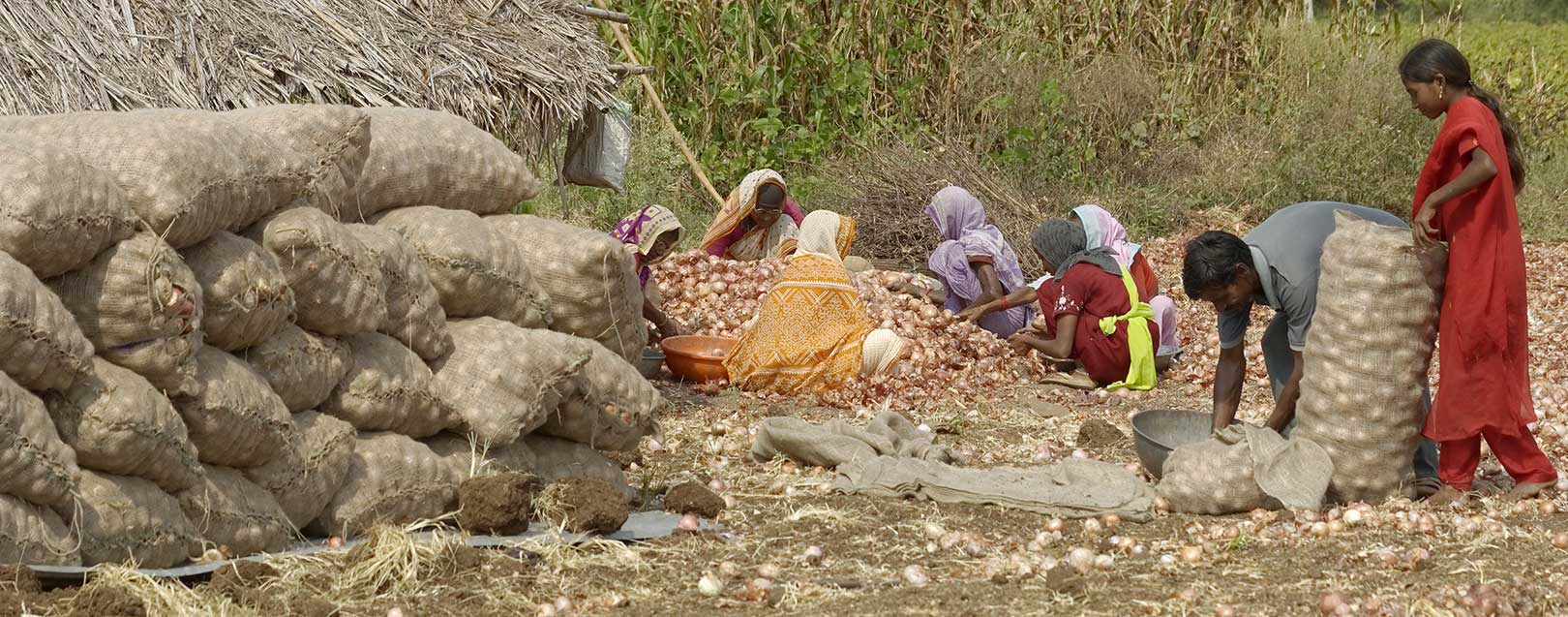
Govt extends 5% MEIS benefit to onions to tackle price crash
Deepak Kumar
The government on Friday agreed to reward onion exporters with a 5% MEIS benefits on onions to help promote its exports from the country. The decision comes at a time when the country’s onion exports have witnessed a surge and the domestic prices have crashed to a record low.
The 5% MEIS rate has been implemented with a view to protect farmers’ interest and arrest declining onion prices in the domestic market. Wholesale prices of onion in Lasalgaon - Asia’s biggest onion market – fell to Rs.6 a kg on Friday from Rs.48.50 a kg last year.
“The government would extend this duty benefits on exports of both stored and fresh onions till December 31,” Commerce and Industry Minister Nirmala Sitharaman said in a tweet.
"Expected quantity of onions exported to be approx 3-3.5 lakh MTs (tonnes). Hopefully will help to export more onions from India," she said in a series of tweets.
Onion prices have nosedived due to substantially higher production in 2015-16. The total production is estimated at 202 lakh tonnes in crop year 2015-16 compared to 189 lakh tonnes in 2014-15.
Maharashtra and Madhya Pradesh, two of the country’s largest onion-producing states, have witnessed abundance of unsold stocks; to an extent that some farmers in Nashik have claimed they received 5 paise per kg rate on their onion sale.
Exports of onions, however, surged 33% to Rs.2,362 crore during the first 11 months of 2015-16 crop year, after the shipments registered as much as 20% decline in 2014-15.
How beneficial is the 5%?
Last year, the government had raised the minimum onion export price to $700 per tonne in August from $425 per tonne in June (when the same was $300 per tonne in Pakistan), and then finally removed the MEP altogether in December last year, thereby making the Indian onions more competitive in the international markets.
In the recent years, China and Pakistan have emerged as the two major onion exporting countries, with their onions prices being comparatively cheaper than that of India. They have managed to meet international quality and pungency, while Indian onions have lagged behind in terms of quality and domestic policies.
Last year, onion prices in China were relatively high, at 2,000 yuan per tonne. Expecting another bumper season this year, the farmers in China have increased their acreage production by 15-20%, which led to a colossal fall in onion prices, by 1,000 yuan per tonne.
In the US too, farmers have increased their acreage this year against last year, however, overall yield has witnessed a fall, but the prices seem to be good. The prices of onion in Pakistan, however, have been mildly fluctuating, not witnessing much change.
This year, huge domestic production, along with the absence of minimum export price and the 5% grant given to the exporters to further encourage them, is also likely to reflect on the country’s overall exports of this commodity. A great production season in India has already pushed its exports, which has also affected the commodity exports from China, whose onion exports fell by as much as 8% till this June as compared to last year.
Meanwhile, to tackle the fall in onion prices due to unsold stock and increase in supply, Maharashtra has proposed to provide a subsidy of Rs.100 each quintal to farmers. Earlier this month, the government had reviewed the current price situation and considered the probability of purchasing more onions to protect the growers’ interest.
India is currently the third largest exporter of onion following Netherlands and China. The country’s onions are mostly exported to Malaysia, Bangladesh, Sri Lanka, UAE and Nepal.
However, it remains to be seen if the 5% MEIS will have an impact on domestic prices or boost exports, given the onion glut across major producing nations.

 to success.
to success.